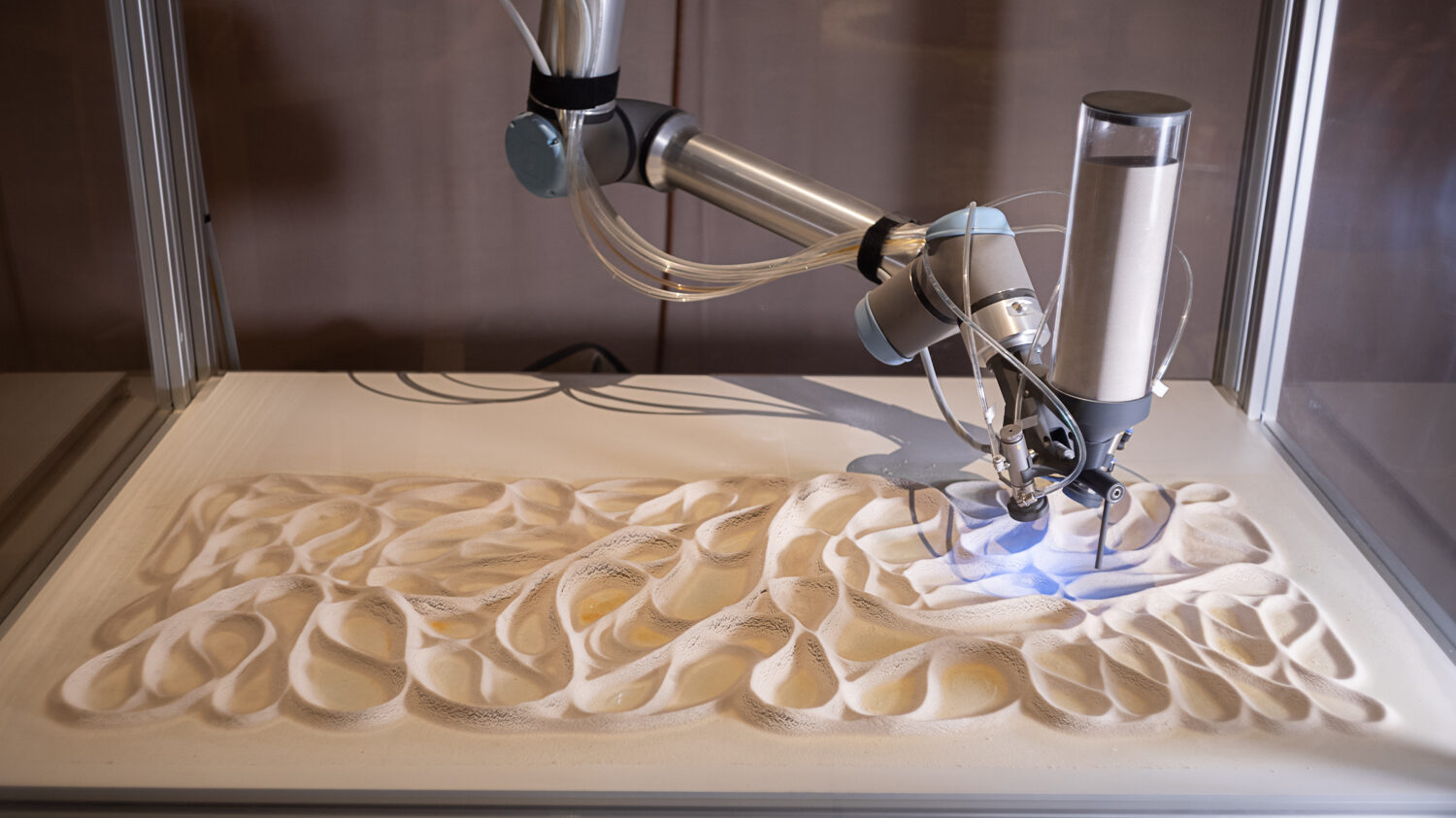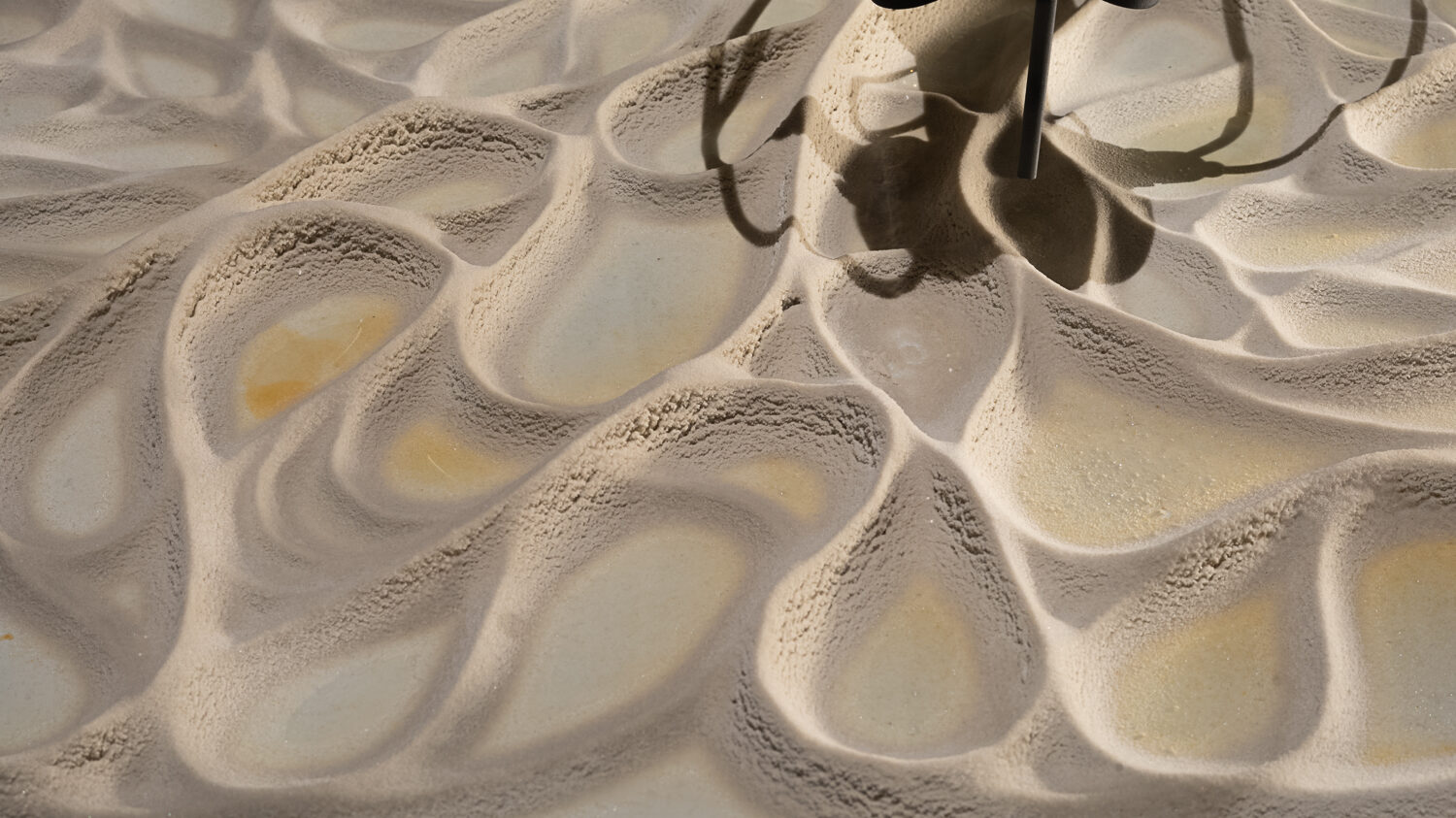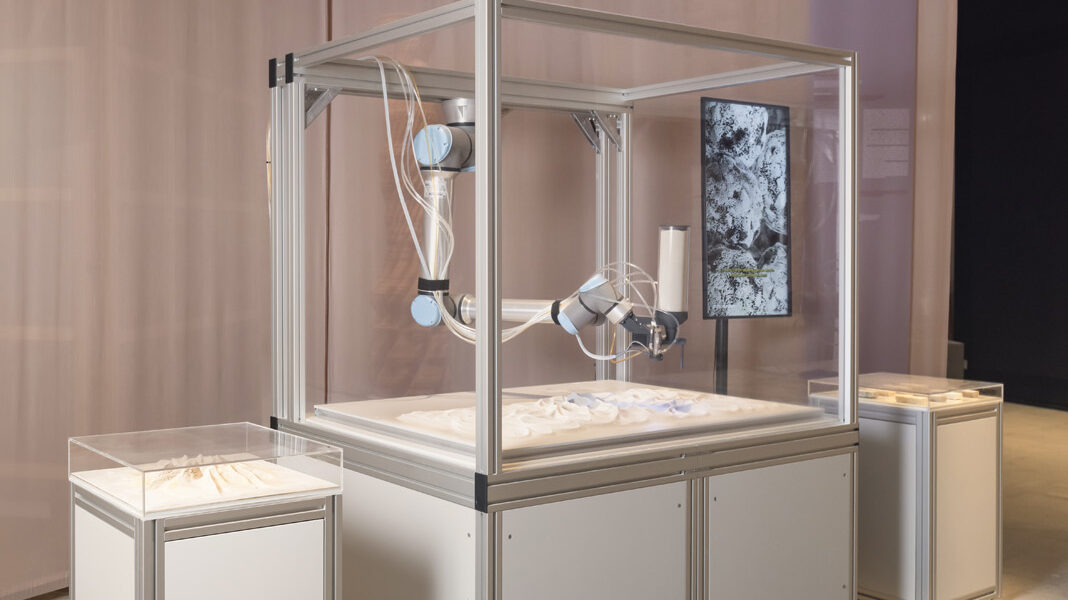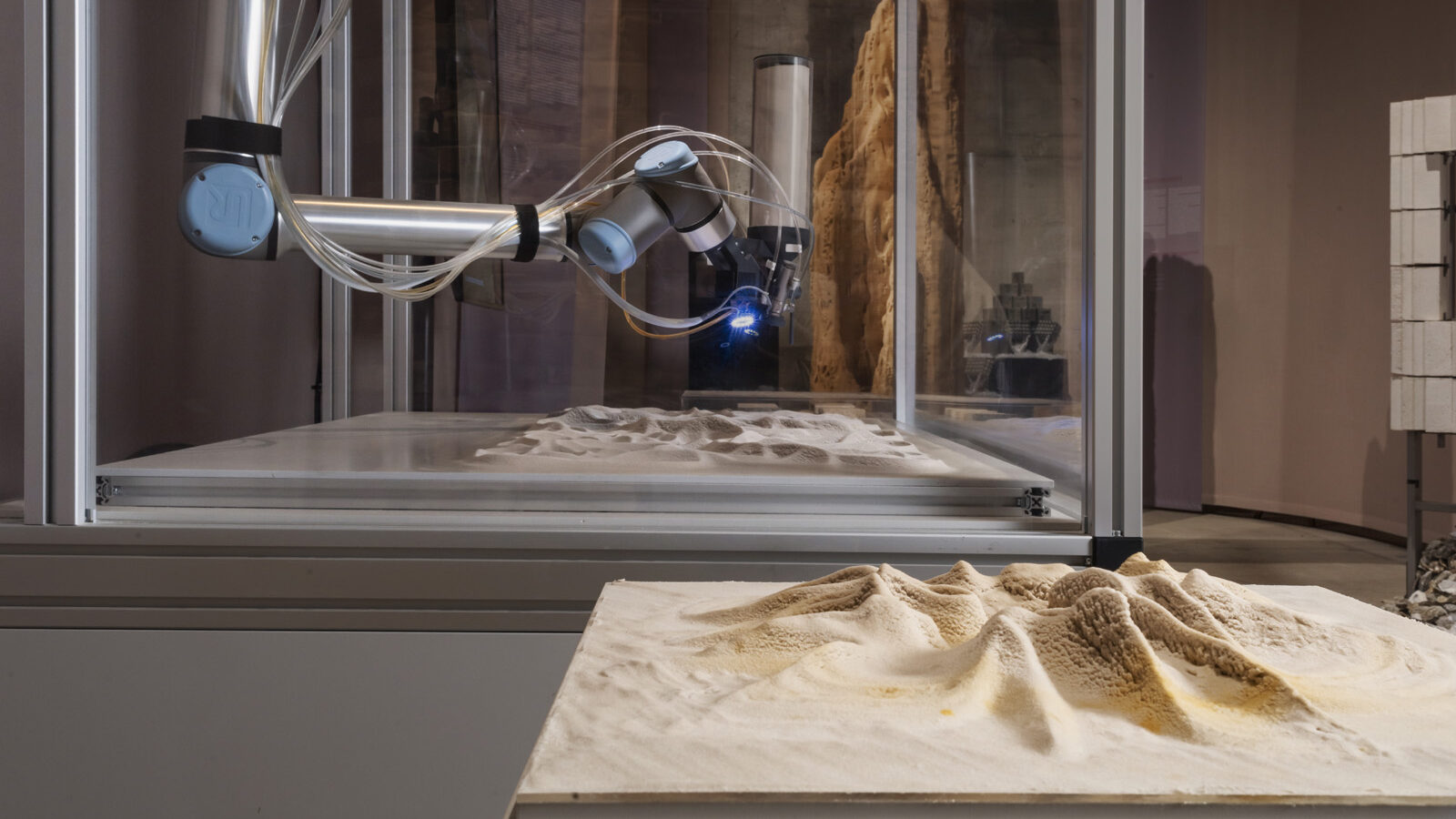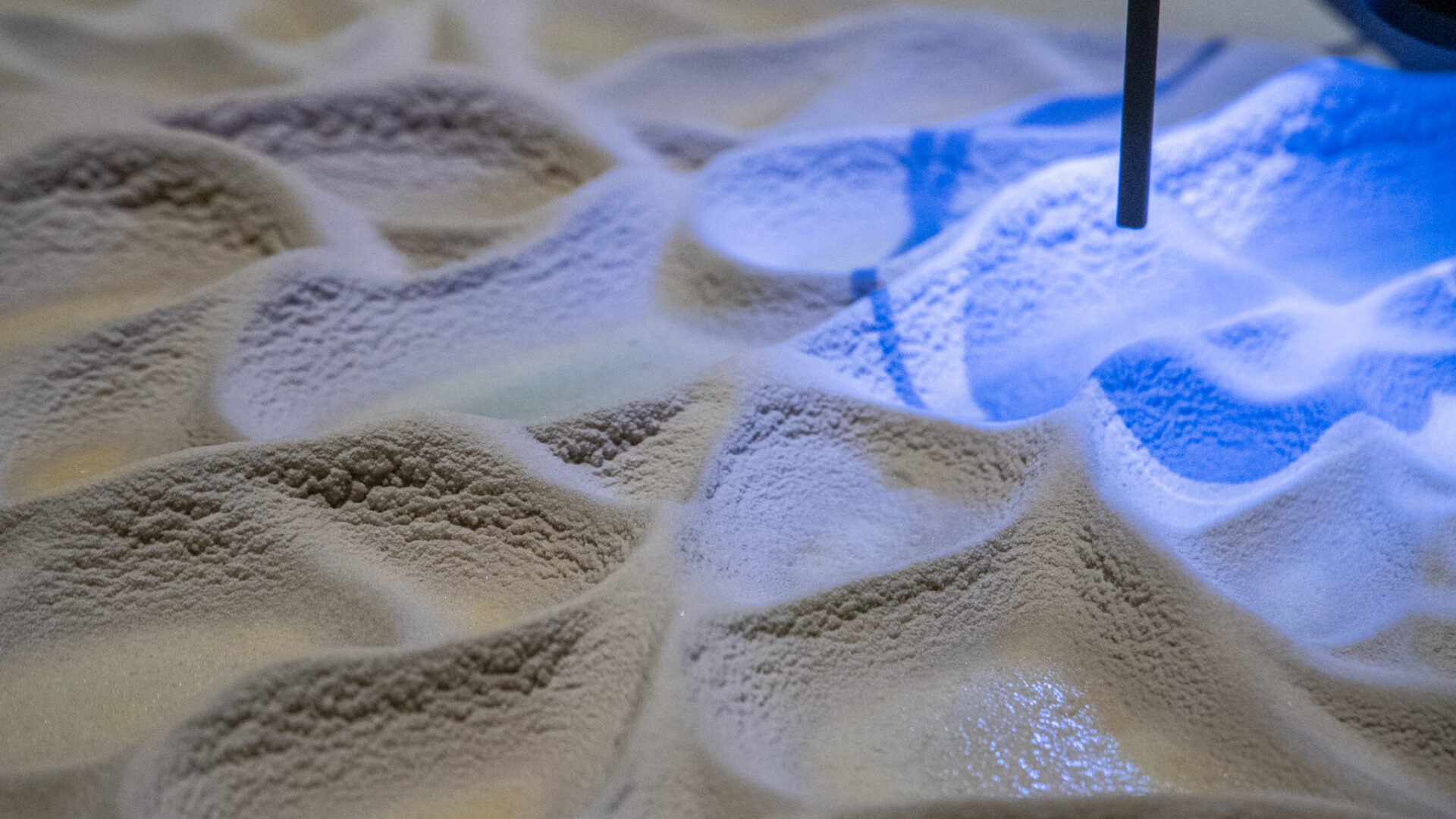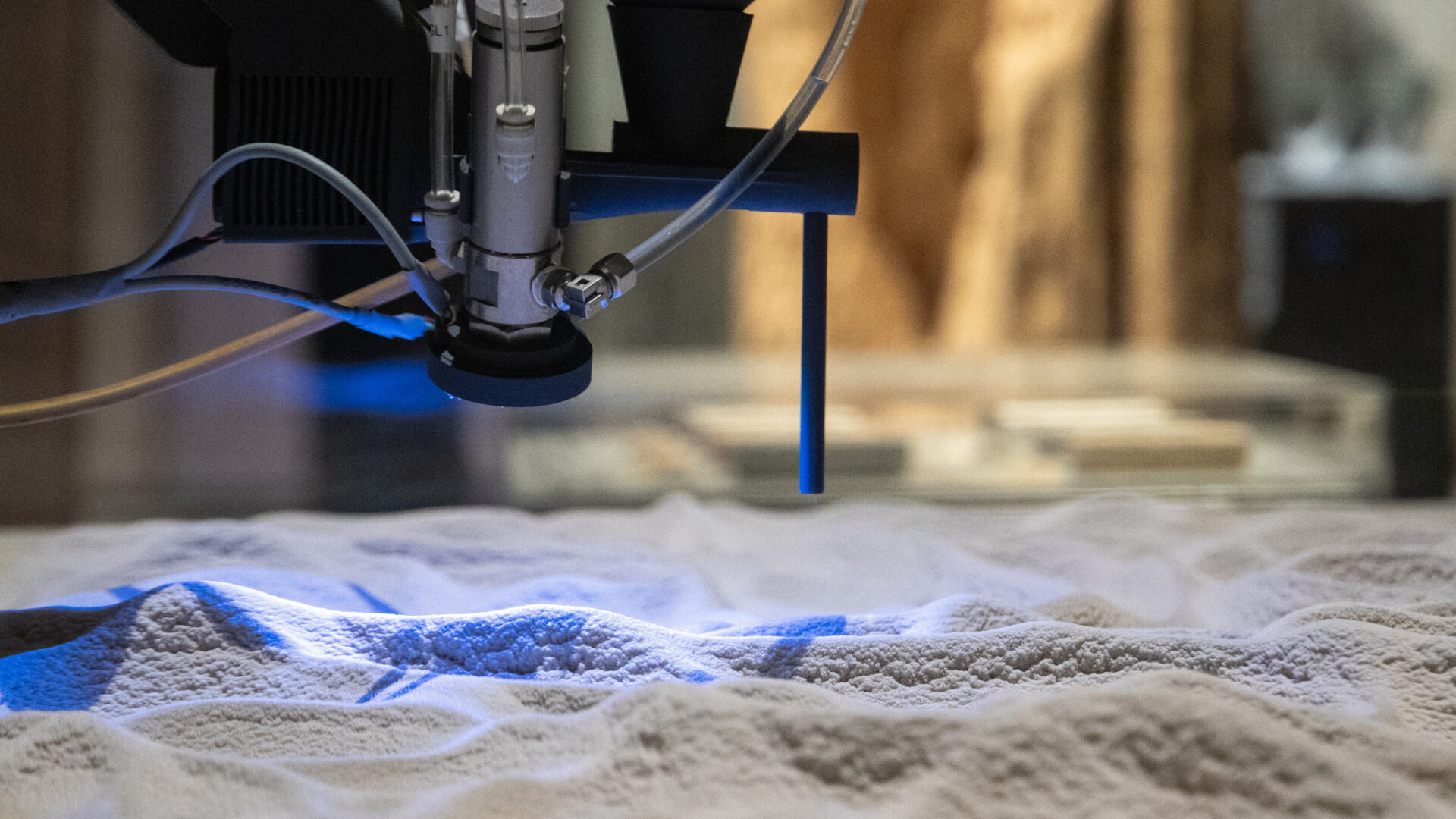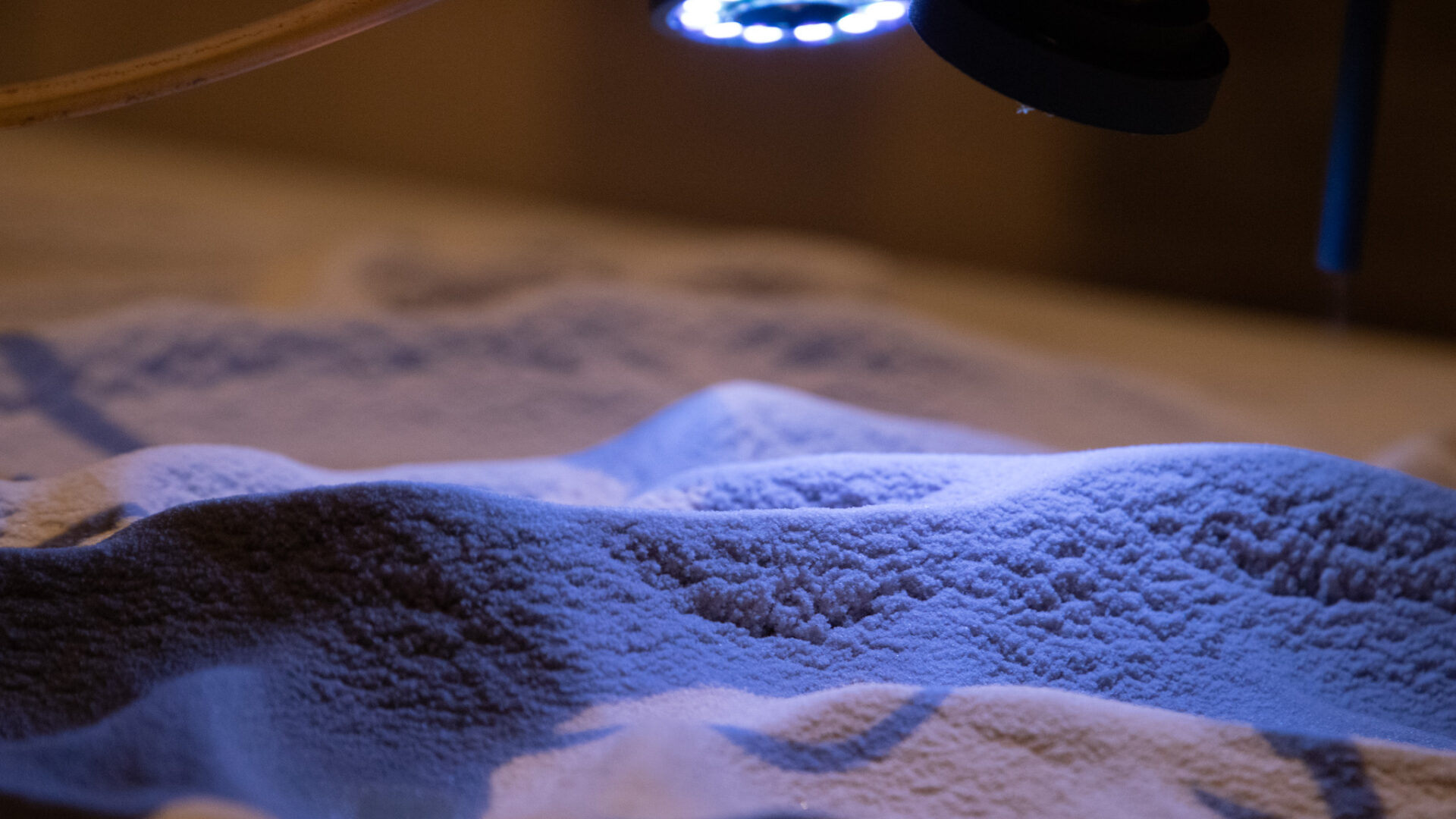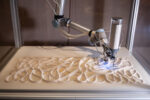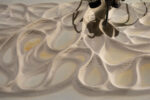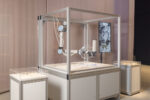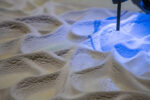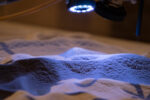19th International Architecture Exhibition of La Biennale di Venezia curated by Carlo Ratti. Intelligens. Natural. Artificial,
Arsenale Exhibition: Matter Makes Sense
Geological Microbial Formations explores biocementation as a radical approach to transforming construction waste into architectural materials. At the center of the installation, a robotic arm performs a continuous layering process using sand, microbial cultures, and mineral-binding. Each layer is deposited through a two-step spray sequence: a microbial suspension of Sporosarcina pasteurii and a calcium-rich solution that initiates the biocementation reaction. This triggers microbial-induced calcite precipitation MICP — a natural process that binds granulates into stone-like formations under ambient conditions.
Inspired by the slow geological intelligence of stromatolites- mineral structures grown over millennia by microbial communities- the principle is reimagined here as an accelerated and choreographed act by a robotic system which cultivates a living geological formation that grows new links between biology and architecture throughout the Biennale.

Around this active biofabrication core, the installation displays fully formed components and material samples created with different types and sizes of aggregates, from recycled sand and sawdust to coarse rubble and mineral waste streams. These demonstrate the technique’s adaptability and potential to bind a wide range of materials into solid forms, rethinking waste as raw matter for growth.

A companion video reveals the microscopic dynamics behind this transformation- fluorescence and scanning electron microscope footage highlight bacteria motility, crystal formation, and the minute interactions that bind minerals at the grain scale. The installation resists the conventions of static display; it unfolds as a temporal factory— part building site, part microbial lab, part evolving architectural artifact.

More than a construction method, this microbial fabrication technique offers possibilities for regenerative repair. Targeted biocement spraying could seal cracks and fissures in existing architectural surfaces, supporting healing processes through recalcification, turning building skins into sites of biological activity.

Geological Microbial Formations is an ongoing, interdisciplinary research project at the intersection of architecture, microbiology, and digital fabrication. It proposes a material thinking based not on extraction but on cultivation and growth, where structures are not merely assembled but grown, linking from waste to resource through processes of bonding, adaptation, and mineral emergence.
Request press package contact: kantorveza@ethz.ch


